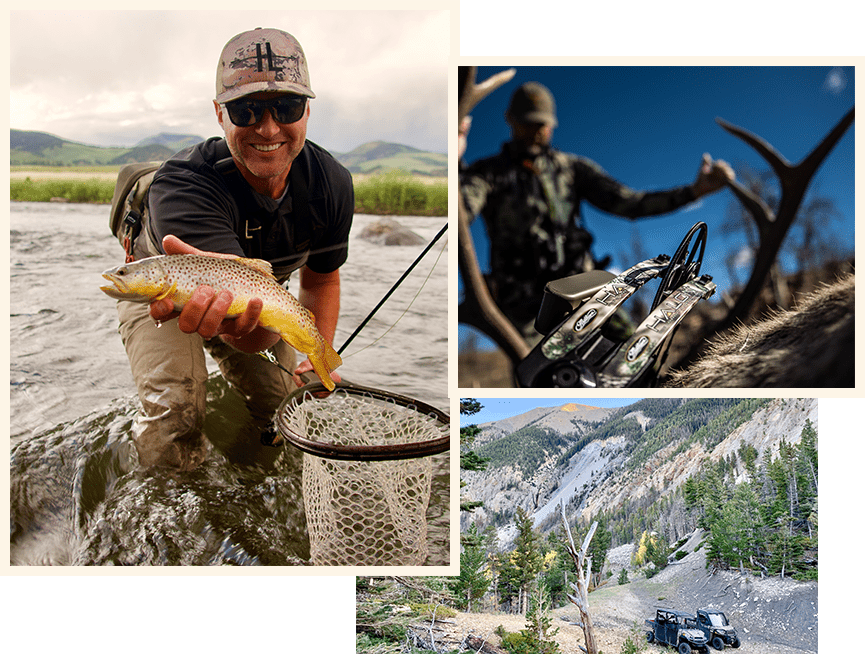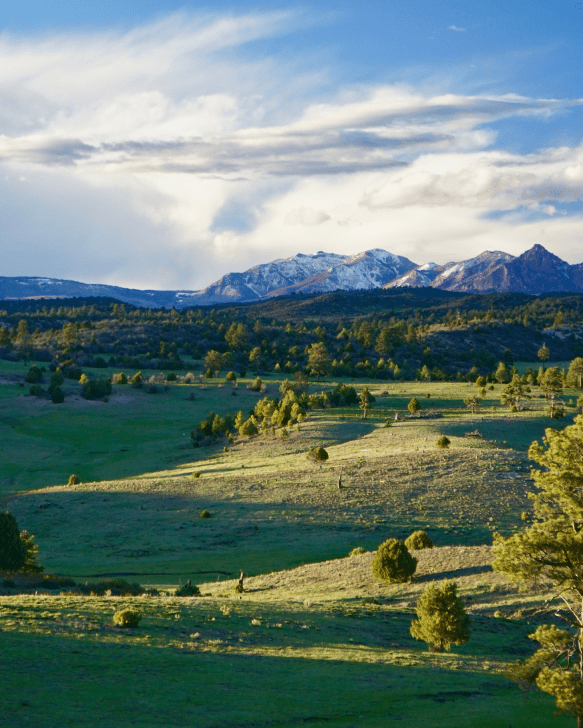Let it snow! Even when the weather outside is frightful, winter fly fishing in Colorado can be delightful. It’s calm. It’s quiet. And it’s cold. So, what things do anglers need to remember? Essentials for personal survival and comfort, yes. Come prepared to be smarter than the fish in the river pools and experience the rewards of wintertime fly fishing. Learn about midges.
You yourself will be moving slower. The roads may be icy or snowy and plows may not get to the backroads. You’ll talk slower and move slower. So do the fish. A dose of caution will help, too. Be careful not to step through ice, step on spawning areas, or forget to bring extra dry gloves. And do remember to enjoy the peaceful, slower pace.
The Adventures of Winter Fly Fishing in Colorado
Be in the moment. Fly fishing during wintertime in Colorado is quieter. The animals hunker down and so do the fish. So, make the most of the stunning beauty, the fresh air, the thoughtful process of preparing to head out in winter weather. Keep your attention on each task at hand and take it one little step at a time. In a way, you’ll need to chill–without getting too cold, of course.
Respect nature. Cold river waters rarely freeze but some shallow sections could be frozen and then covered with snow. Regardless, determined winter anglers need to test the thickness of the ice before walking out onto the river. This is especially important in unfamiliar settings where the water could be much deeper and more dangerous than you expected.
Solo time. In fact, how about starting at familiar places. Have you found good fishing holes during warmer months? You’ll be pleasantly surprised to find the big crowds have vanished at the popular fishing turnoffs. At times, you might even have the whole tailwater to yourself.
Guard fish nests. When you set out to explore bends in the river and new fishing habitat, watch your step. Little spherical fish eggs could be clustered in nests along the banks. We’re trying to protect these spawning areas, so the fish populations replenish themselves. It’s all about watching where you walk and knowing to hold a cast.
(There’s an organization raising awareness about spawning areas. MindtheRedd looks to “minimize angler impact to redds (fish nests) and actively spawning fish.” (“MIND THE REDD | for future generations”) Check out their website to get involved.)
Midges. Now we come to the great art of winter fly fishing in Colorado. Volumes have been written on midges and we don’t pretend to condense those thorough writings for this post. But we’ll nudge our cold weather fly fishing enthusiasts to conquer the midge. It’s the real secret for success during winter.
Popular Fish Midge Patterns in Winter
Hit the water with confidence by concentrating on a good presentation and the midge. The flies to have ready now until spring are small, just like the bugs that lure the fish to the surface when it’s cold. But winter anglers need to go deep to lure them by using a small heavy headed tie. Go to the deeper, slower pools and try the most popular flies as outlined by Orvis.
- Zebra Midge, sizes 18-24
This is simply a thread body of olive, black, rust, or olive with a heavy tungsten bead head. One angler uses size 20 and ties it on as dropper at the bottom of his nymph rig. - Jujube Midge, sizes 18-24
The Jujube Midge is similar the Zebra but features a mane wrapped around the neck. - Egg Patterns, sizes 14-26
The Egg Patterns work well using a double nymph rig. The fuzzy ball on one line can be followed by the midge on a second line. The egg catches attention while the midge penetrates the depth of the water. - Pheasant Tail, sizes 18-22
The Pheasant Tails can be run behind an egg, worm, or other attractor. Scott Dickson often uses the Pheasant Tail with tungsten, brass, or red glass beads or without a bead during low flows. - Parachute Adams, sizes 20-24
Parachute Adams is a reputable dry fly. Rather exotic looking, this tie fools the fish as they come to the surface to feed on midges or Baetis. - Tungsten Head Rainbow Warrior, sizes 18-22
Tungsten Head Rainbow Warriors take the deep dive quickly, creating a noticeable flash in the water to get the attention of the fish. Best when the water is deeper. - Brooks’ Sprout Midge Emerger, sizes 20-24
Used when the hatches happen, the Brooks’ Sprout Midge Emerger is best in the long, slow, flat tail outs below riffles. Reid Baker might drop it 12 to 18 inches behind a Parachute Adams. - WD-40, sizes 20-24
Heading to tailwaters? Be sure to pack up the WD-40s. Slender and sparse, they mimic the midge in its transitional phase. Chris Barry carries gray, black, and olive colors.
Love the Winter Fishing
So, take your time, be prepped, enjoy the scenery, watch your step, and pack up a variety of midges. You’ll be sure to catch beautiful trout and other fish this winter season.
Fly Fishing Ranches for Sale in Colorado – Harrigan Land Company
To learn about a recreational ranch for sale or fishing property in Colorado, call Harrigan Land Company at 303-908-1101. Serving Colorado, New Mexico, Wyoming, Utah, Montana, and surrounding areas.


